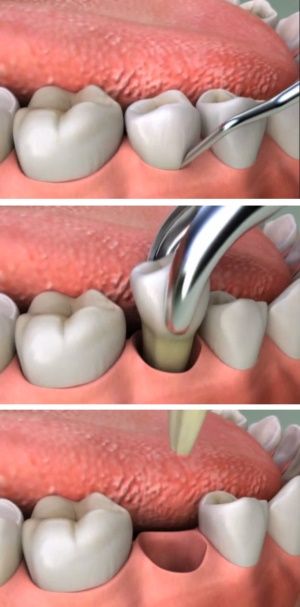The wisdom molar is the third molar or wisdom bone that will grow around the age of 18-20 years. The wisdom molar is no different from the other teeth except that it is the last tooth to erupt. The wisdom molar is as useful as the other teeth if it grows properly with a good biting relationship with neighbouring teeth and healthy gums around it. Checking the post-eruption position of the wisdom molar is visualised using panoramic radiographs.

Unfortunately the eruption of the wisdom tooth is not always adequate and then has a negative but significant impact on the teeth. Most of the time the medical indication in cases of incorrect eruptions is extraction of the wisdom tooth. Early extraction will eliminate problems such as impaction with the second molar which could lead to damage to this tooth.
Missing a wisdom tooth extraction can cause other problems
- increased bacterial plaque
- cavities in neighboring teeth
- gum problems infections around the wisdom teeth
Indications for postoperative care after tooth extraction
- Keep the gauze pad firmly bitten for 1-2 hours to stop the bleeding. If the bleeding persists change the pad and continue to hold the bitten pad firmly until the bleeding stops.
- Do not use mouthwash for 24 hours after extraction
- If small bleeding still occurs, hold cold salt water in your mouth until it reaches body temperature.
- Do not rinse with chamomile tea, water or other liquids for 24 hours
- Brush teeth normally except for the extraction socket area where you do not brush
- Eat if possible for 2-3 days light, cold, unconditioned minced food
- Do not consume milk, yoghurt or derivatives
- Avoid smoking and alcohol
- Mild pain can be controlled with pain-relieving medications prescribed by your doctor
 RO
RO  EN
EN 